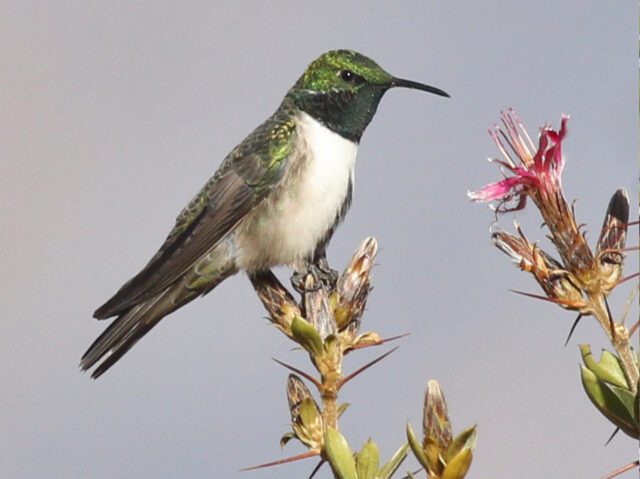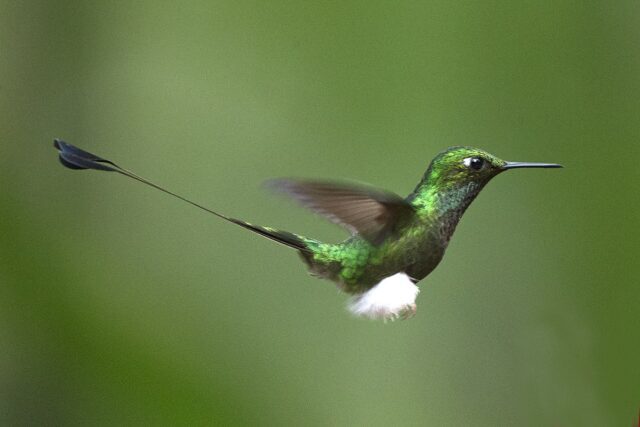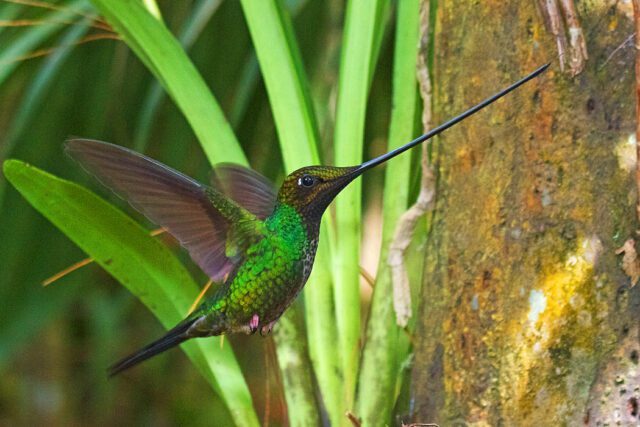Sacred Valley of the Incas: A Hummingbird Paradise
Source: Ladera Sur
Many are unaware that near Machu Picchu there is a place where more than 200 species of birds fly, among them, over 30 types of hummingbirds that amaze visitors with their lively flights and different colors. Here, we will tell you about the incredible diversity of birds, especially hummingbirds, which can be seen in one of the most remarkable places in Peru.
It is one of the most tourist-visited areas in Peru due to its landscapes and historical and architectural wealth; the Sacred Valley of the Incas has a unique climate, fertile lands and characteristic rivers such as the sacred river of the Incas, the Vilcanota or the Urubamba. In fact, the Urubamba Valley features hubs of agriculture, livestock and villages since Inca times.
But in this same place, between Cusco and Machu Picchu, there is another attraction that many are unaware of. Here it is possible to observe hundreds of bird species, hummingbirds being one of the most striking. José Luis Lavilla Holguín, head of exploration of Explora Valle Sagrado, points to the area’s impressive diversity of birds. In fact, in only 4 or 5 days of explorations that cove different ecosystems, they have been able to register more than 200 different species.

Paradise of Hummingbirds
Among all the birds that can be found in this area, hummingbirds are the most outstanding. In the Urubamba Valley there are about 30 different species, two of which are endemic.
They live mainly in the Sacred Valley area between 2,800 and 3,300 m.a.s.l. (9,186 and 10,826 f.a.s.l.). “This area has very good weather and abundant water, resulting in plentiful flora”, says Lavilla, focusing on the climatic conditions that favor the growth of the main food source of these birds. He adds that other very good places to observe hummingbirds are the cloud forest in Machu Picchu and the ancient queñua forests located at altitudes of 4,000 meters (13,123 feet).
The Andean hillstar, the White-tufted sunbeam, the Sword-billed hummingbird, the Giant hummingbird and the Bearded mountaineer are some of the species that can be seen in the Urubamba Valley. However, there are others that are very difficult to observe. Lavilla says that these are the Colcanella picohoz, known for its curved bill, and the Leaf-tailed hummingbird. They are less common than the rest of the birds and usually live below 2,700 meters (8,858 feet) in cloud forests.
Image: Andean Hillstar ©Opisska

Endemic Hummingbirds
This place also has its endemic species. One of them is known as the Bearded mountaineer (Oreonympha nobilis) or little doctor, for the black plumage on the throat and the white plumage in most of its body. “It is one of the most sought-after species in the southern region of the country. It is very beautiful and has a privileged distribution in the Sacred Valley area”, adds Lavilla.
There is also the White-tufted sunbeam (Aglaectis castelnaudii). This one is brown with a white plume on the chest, covers areas between 2,600 to 4,100 m.a.s.l. (8,530 to 13,451 f.a.s.l.) and feeds on nectar and insects in the Interandean wet forests.
Image: Ocreatus Underwoodii © Lip Kee

Praised for Diversity
Lavilla explains that Peru and the Sacred Valley are places rich in bird diversity: “We have different geological formations that have allowed for this diversity, such as lagoons, the mountain range, the salt pan plateau, forests at more than 4,000 meters (13,123 feet) and the cloud forest in the Machu Picchu area. Each habitat offers adequate conditions for the survival of these species.”
This means that in addition to hummingbirds, you can find varieties of ducks, tanagers, birds of prey, kestrels and caracaras, among others. And it is not a strange occurrence to run into the Andean condor, the Andean swift, the Mitred parakeet or the Royal cinclodes.
Image: Sword-billed Hummingbird ©Joseph C Boone

However, hummingbirds are always present and, according to Lavilla, between November and April they can be observed more easily because of the amount of emerging flowers.
While there is no exploration that focuses solely on bird watching at Explora Valley Sagrado, Lavilla ensures that they extend help to birdwatchers: “When they arrive we try to give them the best service on our routes so they can watch the largest number of species.”
Image: Giant Hummingbird ©Jay McGowan

